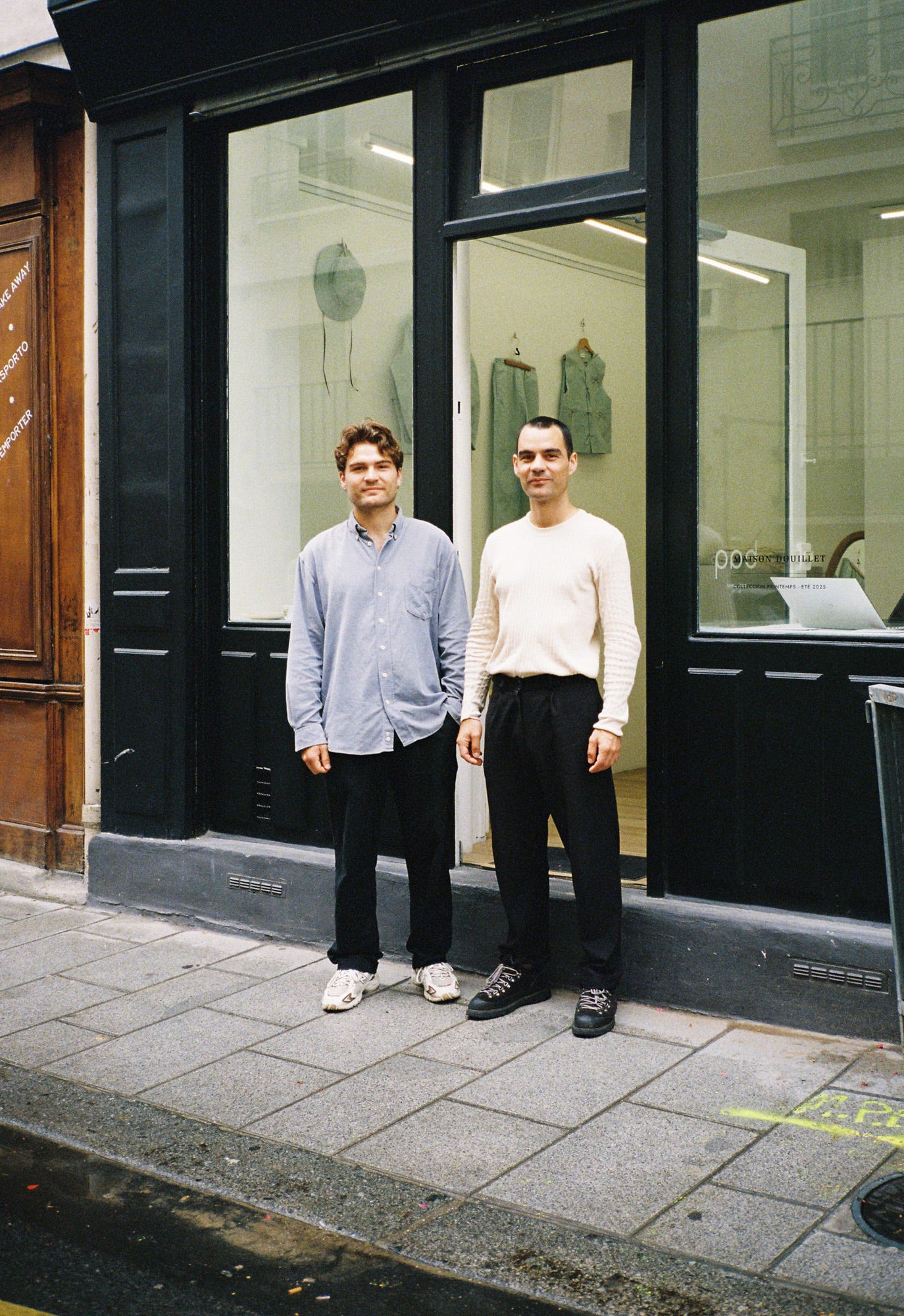PRESENT FOREVER is the go-to source for exploring independent clothing brands, makers and stores from across the globe
This is the third part of a new, ongoing series exploring the past, present and future of clothing from and/or inspired by the (Tyrolean) Alps.
The previous installments of this series scratched the surface of how Alpine brands are currently re-shaping menswear’s post-Gorp world. After some opening reflections in part one — considering what kind of possible future is being realized here — part two introduced four brands from and/or with an emotional connection to Tyrol, the mountainous region in the Alps of northern Italy and western Austria.
REALITYCORE
Before getting into the third installment, let’s zoom out for a moment. What’s menswear’s “Tyrolean moment” again? It’s not simply about Tyrol, of course. Neither is it simply about clothes, whether or not they come from or are inspired by the Alps. It’s part of a broader turn. A turn that contains Ruralcore, Gardencore and any other core that speaks to the same desire. This desire itself goes beyond the urge to re-connect with nature — a trend that’s rapidly become mainstream. “Nature,” after all, doesn’t even exist (at least according to Bruno Latour and Timothy Morton, who are no nitwits) and it’s pretty hard to re-connect with something that’s non-existent. Nature, they argue, is just a name we humans came up with to refer to everything we’re not. Hence, in re-connecting with it, we’re really re-connecting with ourselves, and more specifically with parts within us that we tend to neglect or ignore. Likewise, big fashion’s nature is often just a way to romanticize and commercialize what fashion can’t be — or, to use theoretical slang, to incorporate its own negation: everything from natural beauty that cannot be possessed without ceasing to be beautiful to practical tools that cannot become elevated luxuries without ceasing to be practical.
The broader turn I’m thinking of is about a desire for realness — the “state of actually existing, and not being imagined or supposed,” the “quality of being lifelike,” as the dictionary has it. That’s why people grow tired of concepts and narratives. That’s why luxury brands are struggling. That’s why marketing algorithms will stop working. That’s why identity shopping will come to an end. It’s not real. Or worse, it’s unreal. Or worst, it’s an unreal reality.
But what is real? What makes you real? (And I don’t mean this in some sort of deep philosophical sense.) My guess is that an honest, genuine answer to this question will offer the best possible forecast about clothing in the second half of the 2020s. What makes you real is not what you think or say or believe about yourself. That’s likely 25% self-deceit, 25% keeping up appearances, and 50% ideology, on a rough estimate. What makes you real are your perfect imperfections coming together in an act of unforeseen kindness. It’s the things you enjoy doing without stress, anxiety or ambition. It’s what matters to you when you’ve received bad news. It’s the feeling of self-love after you’ve messed up. Let “Realitycore” be clothing’s equivalent of that: the simple desire to re-connect with a reality that’s actually real, full of honest oddities, genuine quirks and idiosyncratic humbleness.
MAISON DOUILLET
The third installment of this series takes a closer look at one of the brands that I take to belong to this movement: Maison Douillet.
Founded in 2021 by brothers Clément and Germain Douillet, Maison Douillet is located in the French Alps — more specifically in Le Sappey en Chartreuse, a small mid-mountain village in the Auverge-Rhône-Alpes region with just over 1,000 inhabitants. The brand makes responsibly luxurious garments (m/f) and interior objects, all crafted at “a graceful, glacial pace” and promoting “sobriety” as well as “an intimate relationship with nature” in everyday life. Over the past two weeks or so, Clément and I have conversed about Maison Douillet in a back-and-forth email exchange, with Clément reflecting on the roots of the brand’s design aesthetic and sharing details of its collaborations with manufacturers and artisans bordering the Alps — including Gottstein in Austria, for undyed felted wool, and Tissage d’Autan in Tarn, a small weaving collective producing various fabrics from natural and recycled fibers.
Lukas Mauve (LM): You founded Maison Douillet in 2021 together with your brother Germain. If I’m not mistaken, neither of you has a background in fashion. Could you tell me a bit about yourselves and what made you decide to start the brand?
Clément Douillet (CD): “My brother and I were educated in a mid-altitude mountain village in the French Alps by parents with a strong artistic, cultural and scientific sensibility. We’ve both carved out our own educational and professional paths, connected to science and creativity.”
“I was originally trained as an engineer and worked in diverse areas, including NGO’s, communication, scientific research, and data management. Because of different professional and personal experiences, back in 2021 I felt the need to express myself in a creative field — especially working with design, materials, techniques, and imagery. Germain joined me and we started the brand organically, and in a completely self-taught fashion: researching, experimenting, and slowly developing our own vision.”
LM: Could you briefly introduce Maison Douillet?
CD: “In short, Maison Douillet is a contemporary brand based in the Alps that creates ready-to-wear clothing and interior designs. We approach it as a young and evolving entity. At its core stands the will to create and, in a broader sense, to develop, to experiment, and to connect with people and with nature.”
“Our original emphasis was on local materials and local manufacture — working with artisans and knitters, using French merino wool, for instance, to develop utilitarian winter accessories. We started with our “ongoing collection” (2021-23) which enabled us to lay the foundation for the project at large.”
“It’s now almost 2025, and the brand is now evolving in new ways. We’re developing a full ready-to-wear collection while continuing to experiment with artistic and artisanal collaborations.”


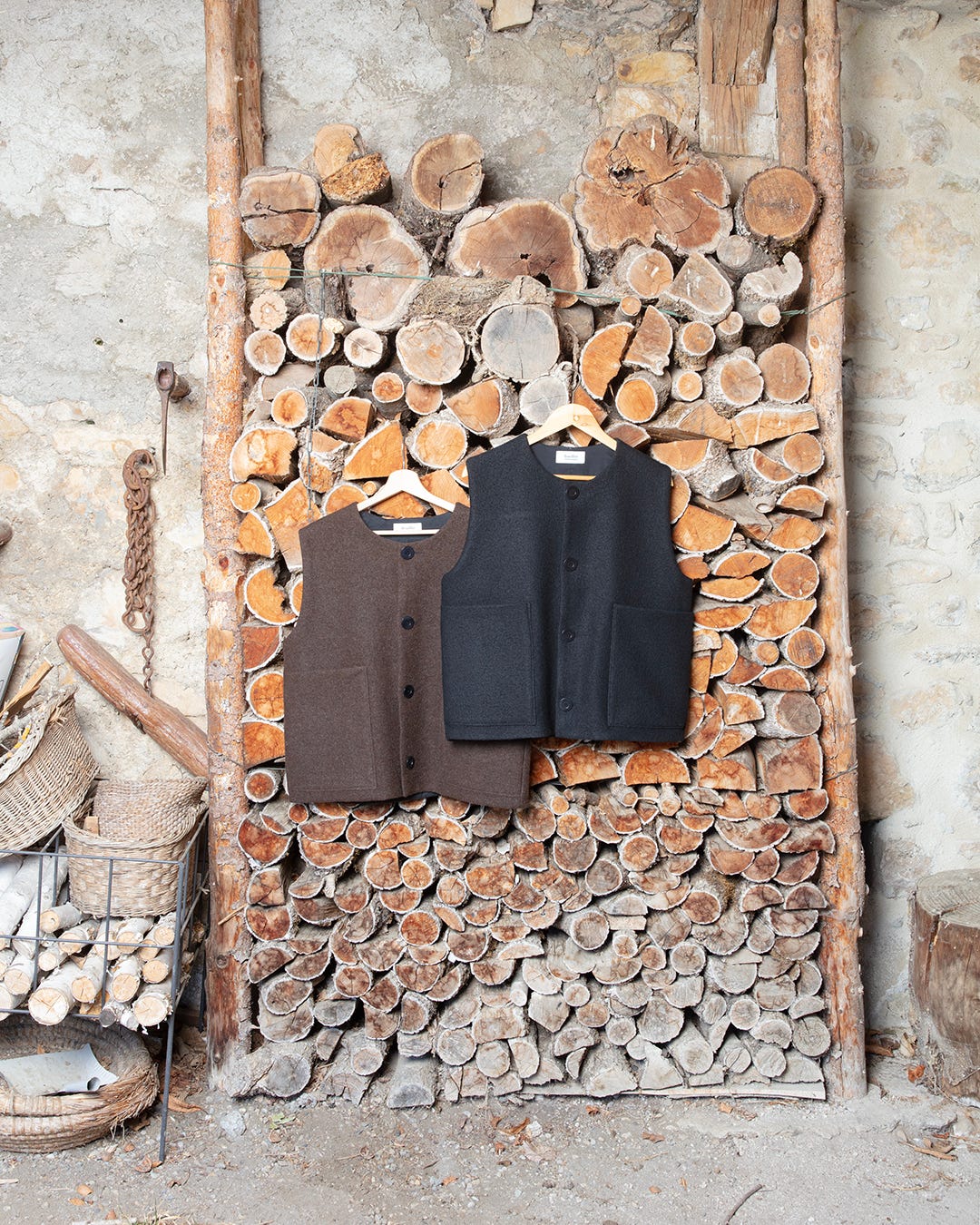
LM: I first came across Maison Douillet a few weeks ago, when I was finishing the first part of a series on clothing from/inspired by the (Tyrolean) Alps. What do the Alps mean to you personally? And, in a more professional sense: what are your thoughts on the connection between the natural surroundings of the Alps and the fabrics and designs of the clothing traditionally worn there?
CD: “The mid-Alpine French mountains are the place we call home. It’s where we grew up and where we still live.”
“My brother and I have a very special relationship with the Alpine environment — and also with the different communities here. On a personal and spiritual level, it feels like a place of refuge and inspiration. Professionally, we try to convey the complex aesthetics of our natural surroundings: the textures of common and little-known parts of nature and the brutality of the mountains as well as the inner feelings of relief they offer. And it’s of course also an age-old and deeply human environment, with strong values and strong historical sensibilities.”
“These Alpine surroundings drive and shape us as designers. With Maison Douillet, we’re focusing on the raw essentials, with a practical and radical approach to what a garment should be.”



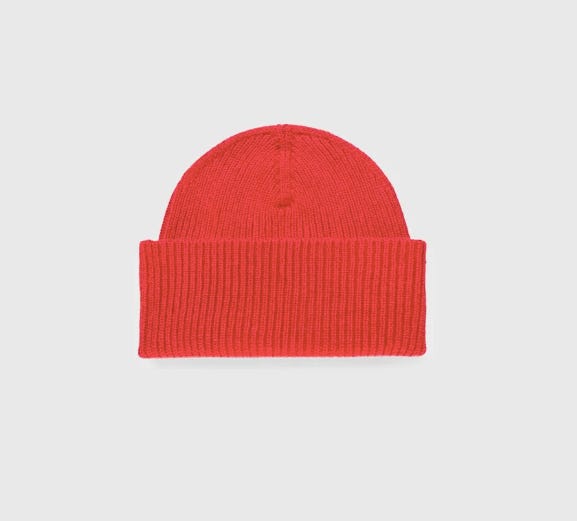
LM: I’d be interested to hear more about the meaning of “redefining our relationship with the everyday object.” In what sense are clothes and accessories everyday objects for you — what, for instance, makes them similar to and different from other everyday objects? In what sense do you feel that our relationship with them needs to be redefined? And how do you feel Maison Douillet is doing just that?
CD: “Our parents have always been experimenting with artisanal creations, instinctively building and enhancing everyday objects. They allowed us to develop a keen eye for all the practical, daily objects around us — developing a strong interest in how these things are built and what materials they are made from. This forms a key part of our educational legacy: to dig deeper into the materials, the objects, the methods of construction and, in doing so, to arrive at an understanding of their inner beauty.”
“To me, clothes are practical and cleverly made everyday objects. I think of a garment as a creative transformation of natural fibers in which a great amount of human ingenuity and sensitivity is involved. At the same time, I sometimes worry that we may be losing our knowledge and understanding of their true nature. Or, put differently: I feel that there’s a need for (many of) us to re-connect with the “true nature” of well-made garments, to consider them as artisanal pieces of art. This would mean paying much more attention to the fibers, to the materials, and to the methods and techniques involved in turning them into wearable objects that can be worn and cherished every single day.”
LM: Maison Douillet works mainly (or exclusively?) with specialized manufacturers and artisans, producing both common and rare natural materials. Could you give me a sense of what such collaborations involve in practice?
CD: “Yes, we only work with specialized (luxury and artisanal) manufacturers, and we ourselves strongly favor natural fibers and fabrics. Since the start in 2021 we’ve put a lot of effort into understanding the manufacturing environment of France and the Alpine regions in Italy and Austria to achieve our ambition of making unique, well-made products.”
“Our next winter collection, AW25, will feature a number of really special materials, including organic cotton/hemp paper-like canvas, alpaca/silk bouclé yarn, and undyed French wool. For this we’re again working with several highly specialized French manufacturers.”
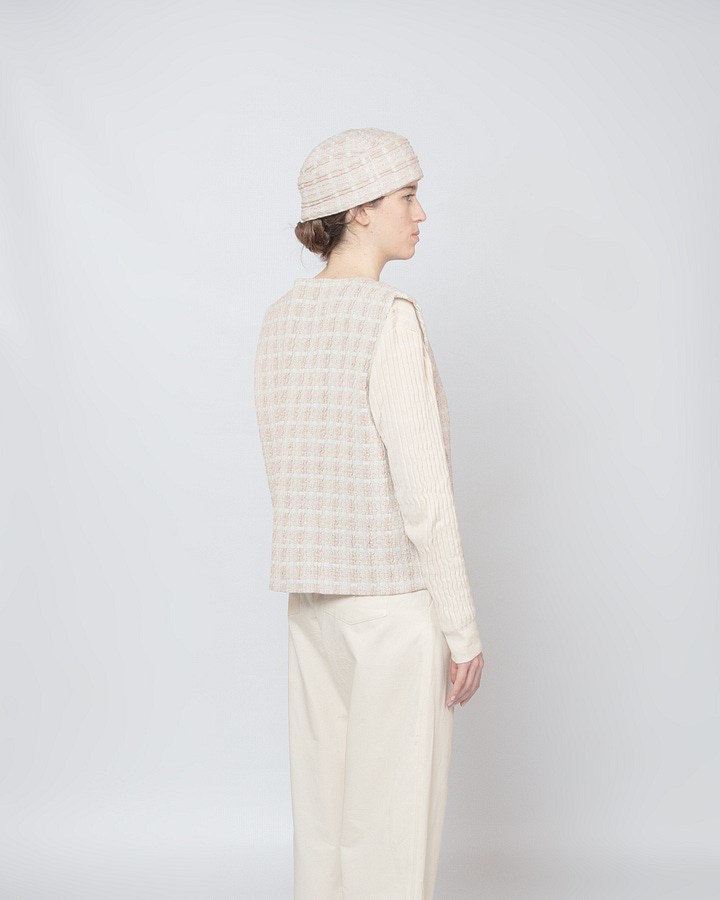
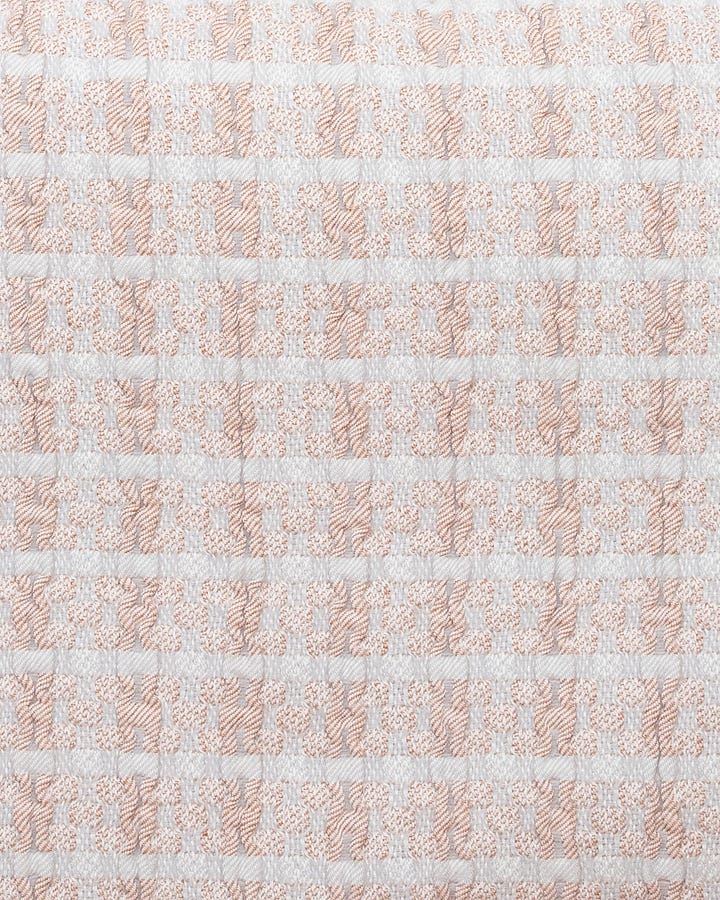
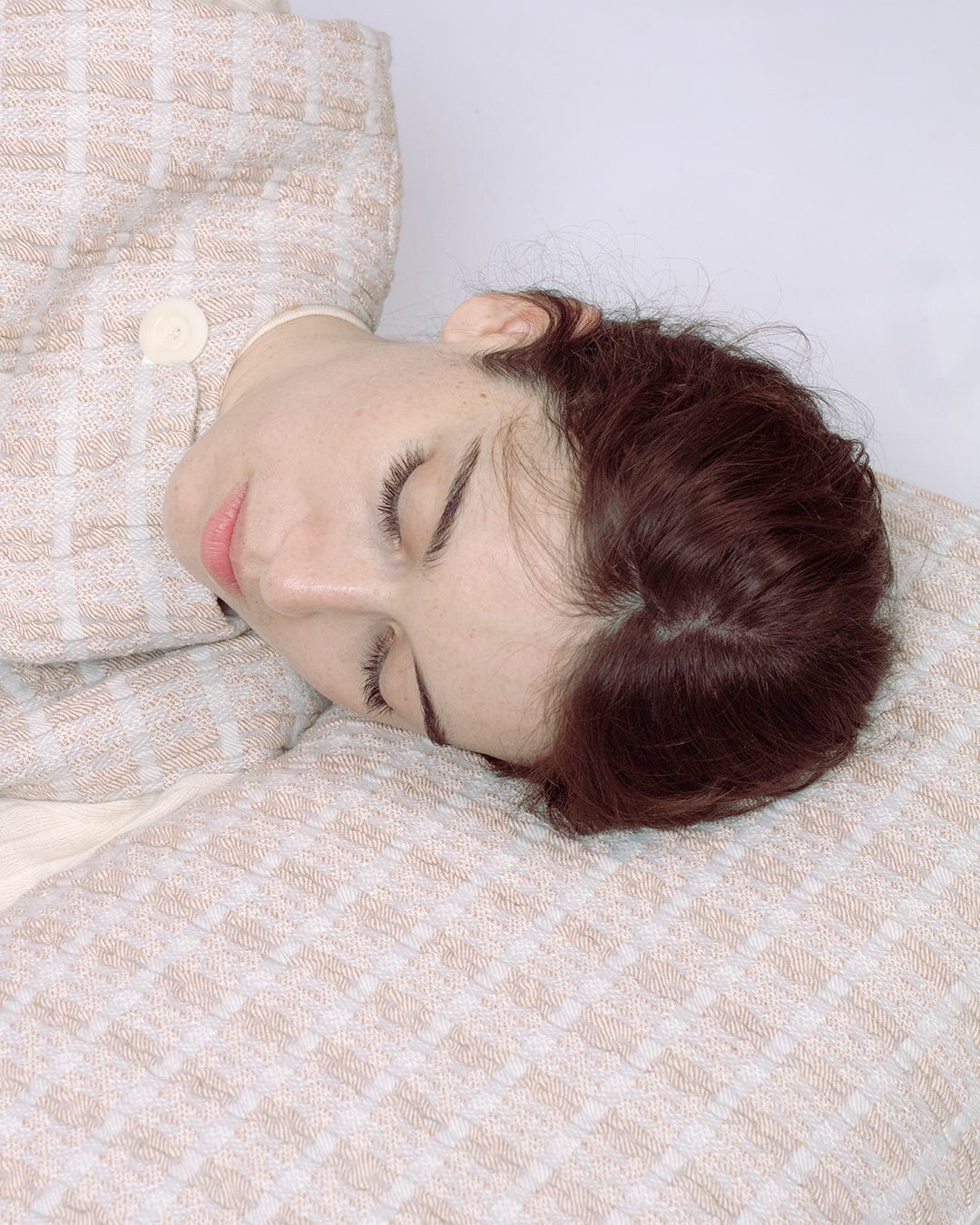
“One of the most interesting examples — in terms of the“fiber-to-garment” process — is our collaboration with Paris-based designer and weaver Justine Gaignault. Together, we’ve developed a unique jacquard fabric made of French wool, linen and cotton.”
“Since the start of Maison Douillet we’ve worked with partners that value and appreciate French wool as much as we do. This has allowed us to identify pretty unique local yarns. During the collaborative process with Justine Gaignault we’ve managed to hand-make a special weaving pattern that was manually felted to creative a highly textured and intricate fabric. We subsequently collaborated with three French workshops/makers (a milliner, a mattress maker, and a garment manufacturer) to create three core items: a vest, a hat, and a cushion. For the final step, that of the visuals, we went out to the Alpine pastures near our home to photograph the collection in surroundings that are fairly common but at the same time very beautiful because of their wild and largely untouched character.”
“This is how we prefer to work and what, we believe, makes Maison Douillet special.”
Maison Douillet is available at The Story by Maidens and through the brand’s own online shop.





